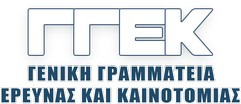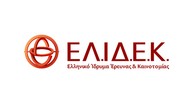

THE WORLD OF THE PALAIOLOGAN ROMANCE.
Representations of Self and Society in the Greek Narrative works of the Late Medieval period
(thirteenth – fifteenth centuries). A Multidisciplinary Approach to Identity, Otherness,
Gender and Ideology.
In 1204 the Eastern Roman Empire practically ceased to exist – at least, as it existed in the past nine hundred years. In the new world created by the results of the Fourth Crusade, in an era of transition, transmutation and perpetual conflicts, people turned to an ambivalent literary genre for expressing themselves, a literary genre “ancient” but also “novel”, “Roman” but also “Frankish” and even “Eastern”. This study intends to examine (applying mainly modern narratological theories and historiographical tendencies) in a comprehensive whole the main aspects of the romances of the Palaiologan period and of the world as they represent it, comparing them thoroughly with other narrative works of the same period (mostly hagiographical, historical and rhetorical), as well as visual works, from a combined historical, anthropological, archeological and philological perspective.
During the eleventh century it seems that the aura of the hagiography, the predominant form of narrative in earlier periods, starts to fade and, as the hagiographical narrative recedes, an
empty space is created which the writers of the following century -the Komnenian era- attempted to fill with a more or less direct return to the Greco-Roman novel. After this revival of the novel during the twelfth century and the appearance of the first Greek chanson de geste (Digenis), progressively this undefined literary genre gains in popularity and, from the thirteenth century on, new works appear which do not follow closely the “tradition” of the “novelistic genre”. Indeed, it seems that the revival of the novel during the Komnenian period had something to do with the remarked tendency of “romancing the past” that appeared in the Mediterranean and Near East medieval world (France, Byzantium, Abbasid Caliphate). However, the Palaiologan romances seem to have had different aspirations, to be urged by different motivations and to begin from different starting points. In a sense, these texts (which have attracted scholarly interest and have been reevaluated only recently) are the best representations, despite their imaginary setting or allegorical meaning, that we dispose about the particularities of Palaiologan society and homo paleologus.
This program examines the way in which people of the Palaiolologan period told stories, analyses what those stories meant to them and how they reconstructed their social and historical reality through such stories and from an anthropological perspective. It also aspires to give answers to crucial questions regarding the making of the self and the social identity of the
people of the Palaiologan period: what did they think of themselves, who was the “other” and what made him a “stranger”? And what about gender construction and identities, what was a man, what was a woman and which were their main individual and social qualities? How did the imperial ideology affect the literary heroes and what can we conclude about its everyday effects? Are there any links between the literature and the visual arts of the period? What can the themes and motifs of romance, along with romance chronotopes, reveal about everyday life and conduct? In what extent had the scholars of the Palaiologan period been involved in the efflorescence of the romances? What links are there to be found between the Palaiologan romances and the romances of the Latin “West” or the ones of the Arabic “East”? These are some of the main questions that this study aims to answer.
In order to provide relevant answers, the project will adopt a multidisciplinary approach. Methodologically, various kinds of sources will be examined in order to provide an overall survey of the period. Consequently, historical sources, rhetorical sources (e.g. mirrors of princes), archeological sources are examined and compared to the Palaiologan romances. Studying, for
instance, the historiographical and rhetorical works of Palaiologan period, one can find meticulous reports on the public affairs of the Empire and its political ideology. The majority of these writers were, after all, accomplished scholars, people of great importance, high ranking officials and skillful diplomats, with insight to both public and private life, rendering thus the historiographical and rhetorical texts of the period invaluable sources concerning identity issues or the interaction of the Byzantines with the “Other”. Besides this information, however, the reader can discover the details of a changing world: the establishment of a new, multicultural and multilingual society. The emperors of the Palaiologan dynasty had to cope with a danger that, while in the thirteenth century came from the West, but which ultimately overpowered them from the East. That shift is described thoroughly in the Late Byzantine historiography and its comparison with the romances of the same period could produce a fairly clear image of individuals, social and ethnic identities and gender roles at the time.
Furthermore, even though Byzantium was plagued by social, political and financial troubles during this period, the artistic production of every type flourished. The imperial family,
Palaeologan aristocracy and members of ecclesiastical hierarchy actively participated in artistic life as patrons and commissioners of works of art. Manuscripts, paintings, and mosaics of this period reveal the formulation of novel iconographic themes, an increased interest in narrative expression and images inflected with dramatic and emotional qualities. Moreover, there is a strong relation between images and textual sources, a turn toward greater realism and a mixture of western and eastern artistic concepts and ideas. Invested with a rich artistic and historical referentiality, those elements were manipulated in order to create sophisticated and semantically iconic/visual representations, whose comparison with the narrative works of the same period could only produce interesting results as regards identity and gender issues.